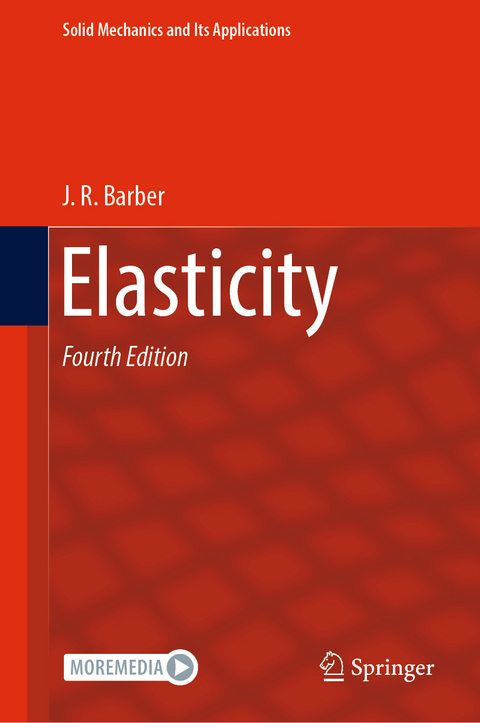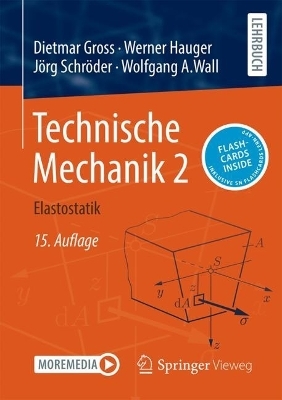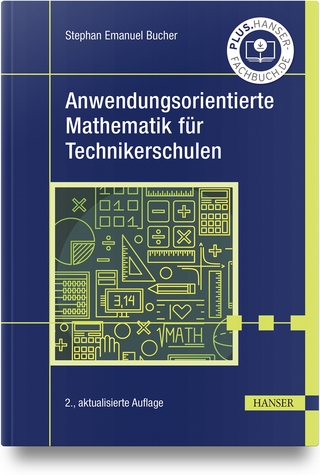
Elasticity
Springer International Publishing (Verlag)
978-3-031-15213-9 (ISBN)
This book emphasizes engineering applications of elasticity. This is a first-year graduate textbook in linear elasticity. It is written with the practical engineering reader in mind, dependence on previous knowledge of solid mechanics, continuum mechanics or mathematics being minimized. Examples are generally worked through to final expressions for the stress and displacement fields in order to explore the engineering consequences of the results. This 4th edition presents new and revised material, notably on the Eshelby inclusion problem and anisotropic elasticity.
The topics covered are chosen with a view to modern research applications in fracture mechanics, composite materials, tribology and numerical methods. Thus, significant attention is given to crack and contact problems, problems involving interfaces between dissimilar media, thermoelasticity, singular asymptotic stress fields and three-dimensional problems.
J. R. Barber graduated in Mechanical Sciences from Cambridge University in 1963 and joined British Rail, who later sponsored his research at Cambridge between 1965 and 1968 on the subject of thermal effects in braking systems. In 1969 he became Lecturer and later Reader in Solid Mechanics at the University of Newcastle upon Tyne. In 1981 he moved to the University of Michigan, where he is presently Jon R. and Beverly S. Holt Professor of Engineering and Arthur F. Thurnau Professor of Mechanical Engineering and Applied Mechanics. He is a Chartered Engineer in the U.K., Fellow of the Institution of Mechanical Engineers, and has engaged extensively in consulting work in the field of stress analysis for engineering design. He is author of three books ('Elasticity', 'Intermediate Mechanics of Materials' and 'Contact Mechanics') and over 200 articles in the fields of Elasticity, Thermoelasticity, Contact Mechanics, Tribology, Heat Conduction and Elastodynamics. He is a recipient of the Drucker Medal, the Ted Belytschko Applied Mechanics Award and the Mayo D. Hersey Award of ASME and the Archie Higdon Distinguished Educator Award of ASEE. He has served as Associate Editor of the ASME Journal of Applied Mechanics, Mathematical Problems in Engineering, and ASME Journal of Tribology, and is co-Editor of the Springer book series Solid Mechanics and its Applications, and a member of the editorial boards of the International Journal of Mechanical Sciences, the Journal of Thermal Stresses and Acta Tribologica.
Part I. General Consideration.- Chapter 1. Introduction.- Chapter 2. Equilibrium and Compatibility.- Part II. Two-Dimensional Problems.- Chapter 3. Plane Strain and Plane Stress.- Chapter 4. Stress Function Formulation.- Chapter 5. Problems in Rectangular Coordinates.- Chapter 6. End Effects.- Chapter 7. Body Forces.- Chapter 8. Problems in Polar Coordinates.- Chapter 9. Calculation of Displacements.- Chapter 10. Curved Beam Problems.- Chapter 11. Wedge Problems.- Chapter 12. Plane Contact Problems.- Chapter 13. Forces, Dislocations and Cracks.- Chapter 14. Thermoelasticity.- Chapter 15. Antiplane Shear.- Chapter 16. Moderately Thick Plates.- Part III. End Loading of the Prismatic Bar.- Chapter 17. Torsion of a Prismatic Bar.- Chapter 18. Shear of a Prismatic Bar.- Part IV. Complex-Variable Formulation.- Chapter 19. Prelinary Mathematical Results.- Chapter 20. Application to Elasticity Problems.- Part V. Three Dimensional Problems.- Chapter 21. Displacement Function Solutions.- Chapter 22. The Boussinesq Potentials.- Chapter 23. Thermoelastic Displacement Potentials.- Chapter 24. Singular Solutions.- Chapter 25. Spherical Harmonics.- Chapter 26. Cylinders and Circular Plates.- Chapter 27. Problems in Spherical Coordinates.- Chapter 28. Eigenstrains and Inclusions.- Chapter 29. Axisymmetric Torsion.- Chapter 30. The Prismatic Bar.- Chapter 31. Frictionless Contact.- Chapter 32. The Boundary-value Problem.- Chapter 33. The Penny-shaped Crack.- Chapter 34. Hertzian Contact.- Chapter 35. The Interface Crack.- Chapter 36. Anisotropic Elasticity.- Chapter 37. Variational Methods.- Chapter 38. The Reciprocal Theorem.
| Erscheinungsdatum | 25.02.2023 |
|---|---|
| Reihe/Serie | Solid Mechanics and Its Applications |
| Zusatzinfo | XX, 637 p. 131 illus., 2 illus. in color. With online files/update. |
| Verlagsort | Cham |
| Sprache | englisch |
| Maße | 155 x 235 mm |
| Gewicht | 1145 g |
| Themenwelt | Mathematik / Informatik ► Mathematik ► Angewandte Mathematik |
| Naturwissenschaften ► Physik / Astronomie ► Mechanik | |
| Technik ► Maschinenbau | |
| Schlagworte | Elasticity • Operator • solid mechanics • Stress analysis • Transformation |
| ISBN-10 | 3-031-15213-1 / 3031152131 |
| ISBN-13 | 978-3-031-15213-9 / 9783031152139 |
| Zustand | Neuware |
| Haben Sie eine Frage zum Produkt? |
aus dem Bereich


